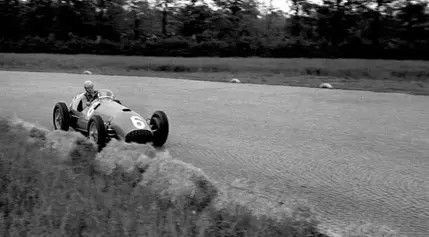Mastering the Art of French Cooking: A Beginner's Guide to Conquering the Culinary Classics
Embarking on the journey of French cuisine can be an exhilarating yet daunting experience, even for the most seasoned home cooks. From perfecting the delicate art of roux-making to mastering the intricate techniques of deglazing and soufflé-crafting, the world of traditional French cooking can seem like a culinary minefield. However, with the right guidance and a willingness to embrace the learning process, the path to French culinary excellence is well within reach.
Unlock the Secrets of French Cuisine: A Beginner's Roadmap to Culinary Mastery
Knife Skills: The Foundation of French Cooking
Contrary to popular belief, the true key to conquering French cuisine lies not in the complexity of the recipes, but in the mastery of fundamental knife skills. As celebrity chef and restaurateur Marc Murphy aptly states, "My first tip for any cooking is knife skills. Once you get knife skills down, you get much less intimidated by the cooking itself." From the delicate julienne cut to the precise chiffonade, these techniques are the building blocks of French culinary artistry. By honing your knife skills, you'll not only increase your efficiency in the kitchen but also elevate the appearance and texture of your dishes, laying the groundwork for your French cooking journey.Beginner-Friendly French Classics: Conquering the Culinary Essentials
While the prospect of tackling complex French dishes like coq au vin or macarons may seem daunting, there are a wealth of beginner-friendly options that can help you build confidence and expertise. As Murphy advises, "First of all, if you're going to cook, you got to mess it up. If you're a brain surgeon, you might not want to f*** it up, but if you're cooking, you can screw it up and it's okay." With this mindset, aspiring French chefs can explore the world of French cuisine without the fear of failure.One excellent starting point is the classic French onion soup, a dish that allows you to practice your knife skills while hiding any imperfections in the final product. The mirepoix, a fundamental blend of chopped carrot, celery, and onion, serves as the base for many French dishes and provides an opportunity to hone your brunoise cutting technique. Beyond soups, ratatouille, a vegetable-forward dish, offers ample chopping practice, while potato-based dishes like pommes persillade or potatoes au gratin provide a delicious and approachable entry point into the world of French cuisine.Mastering the Mother Sauces: The Backbone of French Cooking
At the heart of French cuisine lies a set of foundational sauces known as the "mother sauces." These include béchamel, velouté, espagnole, hollandaise, and tomato sauce. Mastering the art of creating these sauces is a crucial step in elevating your French cooking skills. Each mother sauce serves as the base for a multitude of derivative sauces, allowing you to expand your culinary repertoire and tackle more complex French dishes with confidence.Investing time in understanding the techniques and nuances of these mother sauces will pay dividends in your French cooking journey. From the silky smooth béchamel to the rich and velvety velouté, these sauces are the building blocks that transform simple ingredients into the hallmarks of French culinary excellence.Embracing the Art of Deglazing: Unlocking Flavor Profiles
Another essential technique in French cooking is the art of deglazing. This process, which involves using a liquid to dissolve the flavorful browned bits left in the pan after searing or sautéing, is a crucial step in creating the complex and layered flavors that define French cuisine.By mastering the art of deglazing, you'll unlock a world of possibilities in your French cooking. Whether it's using wine, stock, or even vinegar, the process of deglazing allows you to capture the essence of the dish and incorporate it into your sauces, stews, and braises. This technique not only enhances the flavor profile of your dishes but also adds a level of sophistication that is the hallmark of French culinary excellence.Embracing the Unexpected: Exploring the Diversity of French Cuisine
While the classic dishes of French cuisine, such as coq au vin and beef bourguignon, may be the most well-known, the true depth and breadth of this culinary tradition extend far beyond these iconic offerings. From the delicate and ethereal soufflés to the intricate and delicate macarons, the world of French cooking is a tapestry of diverse flavors, techniques, and regional specialties.As you progress in your French cooking journey, embrace the opportunity to explore the unexpected. Venture beyond the familiar and dive into the regional nuances that make French cuisine such a rich and captivating culinary landscape. Whether it's the hearty and rustic cassoulet of the south or the delicate and delectable tarts of the north, each discovery will broaden your understanding and appreciation of the art of French cooking.




















